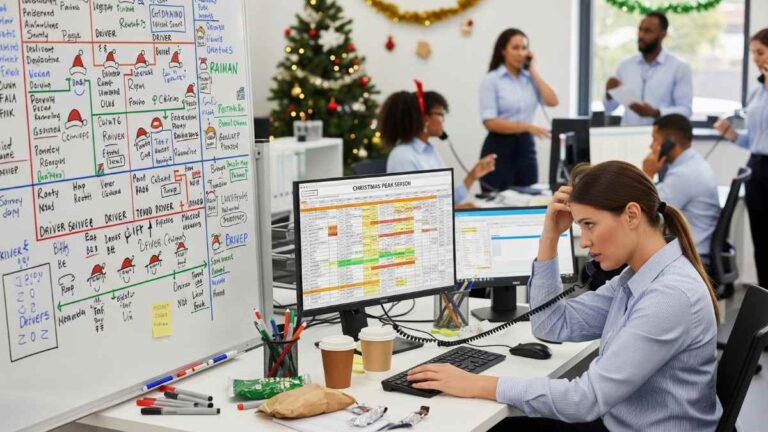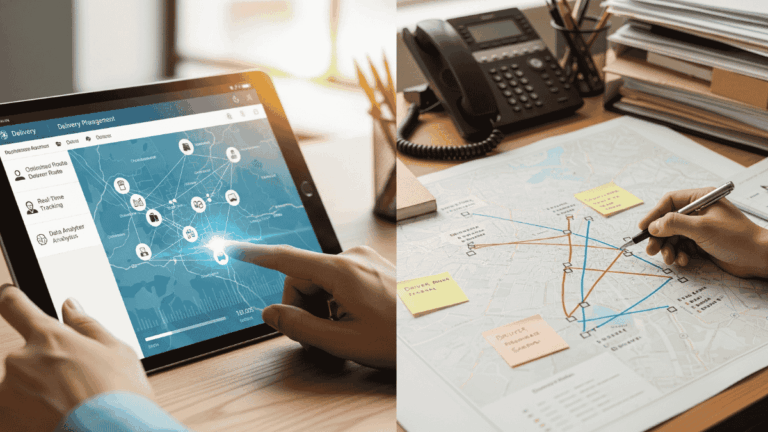Since the COVID-19 pandemic, recommerce has emerged as a powerful solution to both environmental and economic challenges.
Imagine a marketplace where every item gets a second life – from clothing and electronics to furniture and everyday essentials. And it’s not just about saving money, but about changing our habits – the way we shop and think about the products we use.
What is recommerce?
Recommerce, also known as reverse commerce, is the process of selling previously owned goods through physical and online channels.
It involves buying and selling used products, reducing waste, and promoting sustainability.
According to the 2024 Resale Report, the recommerce industry is expected to be worth $84 billion by 2030, almost double that of fast fashion. In addition, the secondhand market as a whole will reach $350 billion by 2028.
With such impressive growth on the horizon, it’s worth looking into how recommerce can be adapted to businesses that want to stay competitive and align with sustainable consumer trends.
Benefits of recommerce
There are numerous benefits to the reverse logistics industry – not only for consumers but for businesses and the planet.
Let’s look at some key benefits.
1. Reverse commerce promotes sustainability
The biggest benefit, and most loudly touted of all, is the sustainability aspect. This is because recommerce keeps products in use for longer, which reduces the amount of waste going to landfills.
By reselling items, there’s not as big a need to manufacture new products, which in turn lowers the environmental footprint associated with production.
This includes (but is not limited to) water usage, energy consumption, and raw materials extraction.
2. Recommerce is cost-effective for consumers
Recommerce also benefits consumers since it allows shoppers to purchase high-quality products at a fraction of the original price.
Think of gently used clothing, refurbished electronics, or re-upholstered furniture. Consumers can get good deals while still enjoying reliable products.
3. Recommerce supports the circular economy
Since the circular economy is all about keeping products and materials in use for as long as possible, recommerce is its perfect ally.
Reverse commerce plays a crucial role in this ecosystem since it leads to the recycling and reusing of goods, which reduces the need for new production and excessive manufacturing.
4. It’s a revenue opportunity
On the financial side, recommerce offers an opportunity for businesses to generate revenue without contributing to excess production.
How?
Companies can tap into the secondhand market by offering trade-in programs or selling refurbished products. This will also make them look favorable to customers who are looking for sustainable options.
5. Recommerce increases customer loyalty
When businesses offer trade-in programs or discounts for returned items, it helps to retain existing customers.
This especially appeals to environmentally conscious shoppers who prioritize sustainability in their purchasing decisions.
How does recommerce work?
Recommerce involves the buying and selling of pre-owned goods through online marketplaces – think of eBay, Depop, or ThredUp. Garage sales and upcycling events are big hits among eco-conscious shoppers too.
Products sold in recommerce are often defined as well-used, gently used, or upcycled into something new.
The recommerce supply chain is unique because it doesn’t follow the traditional model where businesses source goods from a manufacturer or distributor.
Instead, recommerce relies on alternative sources – like customer returns, trade-ins, or items purchased second hand.
Thus, it’s a flexible and dynamic industry. But as with any industry, it also comes with its own set of challenges, such as sourcing reliable inventory and pricing goods appropriately.
Challenges of recommerce
Pricing is difficult for recommerce goods, and the procurement process can cost money, making it challenging to accurately gauge market value.
Here are some common recommerce obstacles:
1. Pricing difficulties
Since recommerce goods are pre-owned, it might be hard to calculate the right price.
Retailers and sellers will have to find a balance between offering a good deal for customers while still making a profit.
2. Procurement costs
Getting your hands on recommerce inventory can also be expensive, especially when you factor in logistics, transportation, and the time required to source products.
Unlike traditional retail (where inventory is ordered from a manufacturer), recommerce goods come from a variety of sources which can make this entire process more complicated and costly.
3. Authentication issues
Verifying the authenticity of items can be a challenge, especially when it comes to luxury goods or electronics.
Many recommerce businesses must invest in processes and technologies to ensure that the goods they sell are genuine. They will also need to assure clients the product is in good working condition.
4. Competition
With the growing popularity of recommerce and reverse logistics, competition can be pretty stiff.
Retail giants like Amazon and eBay have a much larger network and massive financial resources, meaning they already have a strong foothold in the market.
Standing out from this crowd can be challenging for smaller businesses and individual sellers or upcyclers.
Best practices for recommerce
To succeed in the recommerce industry, businesses should adopt certain best practices.
Let’s look at four best practices for recommerce and reverse logistics.
1. Strict quality control
Ensure that the products you sell meet high-quality standards.
You can do this by implementing a strict inspection process to weed out damaged or defective items and maintain customer trust.
2. Recommerce customer education
Many consumers are still unfamiliar with the benefits of recommerce and upcycling.
Educate them on the value of recycled goods and the environmental impact of buying secondhand.
Also consider highlighting the sustainability aspects of your business to appeal to eco-conscious consumers.
3. Trade-in programs
Offer trade-in programs or incentives for customers to return their used goods.
This not only helps you maintain a steady flow of inventory but also encourages repeat business by offering discounts or store credit in return for used items.
4. Be smart about online marketplaces
Use platforms like eBay, Poshmark, or other dedicated recommerce sites to reach a wider audience.
Additionally, social media platforms like Instagram or Facebook Marketplace can also be a goldmine of connections and help you connect with buyers.
The future of recommerce in the circular economy
As mentioned, the recommerce market is set for significant growth over the next four to six years. This growth is driven by rising consumer interest in sustainability and advancements in technology.
And since more consumers are prioritizing eco-friendly purchases, businesses that align with these values will have a competitive edge.
As the world becomes more focused on sustainability and reducing our carbon footprints, recommerce will ultimately become mainstream as more consumers come on board.
The circular economy is also expected to drive innovation in recommerce, with new technologies like artificial intelligence (AI) pricing tools and blockchain for verifying authenticity.
Leveraging digital technologies for recommerce
Dharmendra Hariyani from the department of mechanical engineering at the Swami Keshvanand Institute of Technology in India did a systematic review of how digital technologies can be used for good.
The study emphasizes the role of technologies such as blockchain to track product lifecycles and AI for optimizing resale value predictions.
The research also considered how IoT (Internet of Things) can be used for improving product condition monitoring.
By investing in these technologies, businesses and resellers can streamline the recommerce process while also enhancing transparency and building consumer trust.
Getting started with recommerce
If you are keen to break into the recommerce market, there are four points to consider.
You will need to know your target market, ensure sustainability is a priority, partner with other businesses, and use online tools to your advantage.
Let’s look at how this can be done.
1. Know your market
Understand your target customers and what kinds of products they are looking for.
It might be fashion, electronics, or furniture. Knowing what your customers want will help you source the right inventory and tailor your marketing strategies.
2. Sustainability first
Build a business model that prioritizes sustainability and focuses on reducing waste.
Highlighting your green efforts to customers will go a long way to build trust, do your part for the planet, and position sustainability in the minds of your audience.
However, it’s easy to unintentionally fall into greenwashing traps.
Here’s how to avoid that: Is your business accidentally greenwashing? Six traps to avoid
3. Recommerce partnerships
Consider partnering up with other businesses – think thrift stores or local charities
This will help expand your inventory and reach a broader audience. Collaborating with businesses that share your values can strengthen your brand while being profitable.
4. Use online tools
Platforms like Shopify, Depop, and Poshmark can help you set up your recommerce business online.
Also, don’t underestimate the power of social media. Take advantage of native platform tools to advertise your products and engage with potential customers.
Reverse commerce strategies
Now that you have a plan for how to start, it’s time to consider your tailored reverse commerce strategies in the secondhand market.
By customizing and implementing these strategies, you’ll enhance customer satisfaction, prioritize sustainability, and make a profit.
1. Trade-in programs
- Encourage customers to participate in your trade-in program by offering incentives
- Examples: discounts or store credit.
- This will help you keep inventory flowing and build long-term relationships with your customers.
2. Refurbished goods
- If possible, offer refurbished or certified pre-owned items.
- Many consumers are willing to pay more for items that come with a guarantee of quality.
ALSO READ: Retail alert: 25% of consumers demand sustainable delivery options
3. Use data and analytics
- Track customer behavior and purchasing trends to improve your inventory management.
- Analytics can help you understand which items are in demand
- This also allows you to adjust pricing strategies.
4. Customer satisfaction first
- Make sustainability and customer satisfaction the pillars of your business.
- Focus on delivering quality products and a great experience.
If you do this, customers will keep coming back!
Recommerce: in a nutshell
In conclusion, recommerce presents a powerful opportunity for businesses to embrace sustainability while tapping into a rapidly growing market.
By leveraging digital technologies, prioritizing customer satisfaction, and implementing effective strategies (like trade-in programs and quality control), recommerce businesses can play a key role in the circular economy.
As consumer demand for sustainable and cost-effective options continues to rise, adapting recommerce practices can not only drive growth but also foster long-term environmental and economic benefits.
NOW READ: Recommerce market booms to €94 billion – Report
About the author
Cheryl has contributed to various international publications, with a fervor for data and technology. She explores the intersection of emerging tech trends with logistics, focusing on how digital innovations are reshaping industries on a global scale. When she's not dissecting the latest developments in AI-driven innovation and digital solutions, Cheryl can be found gaming, kickboxing, or navigating the novel niches of consumer gadgetry.











